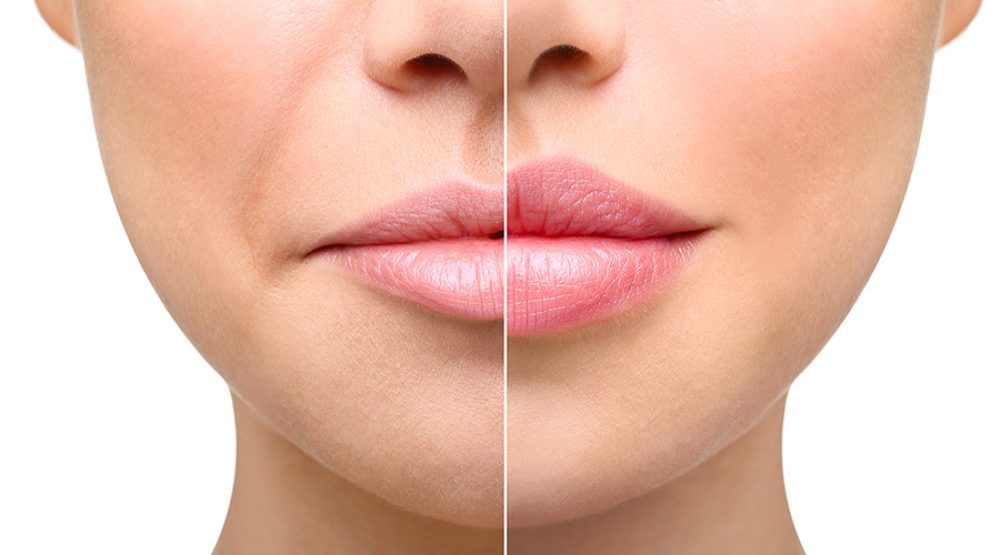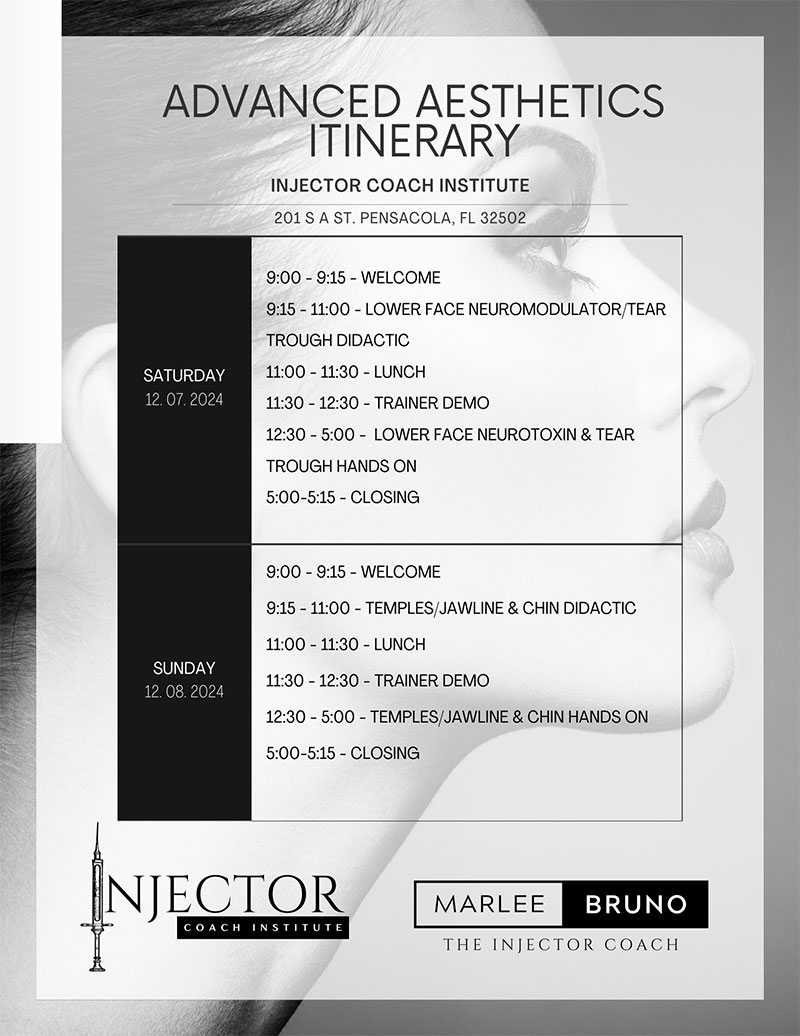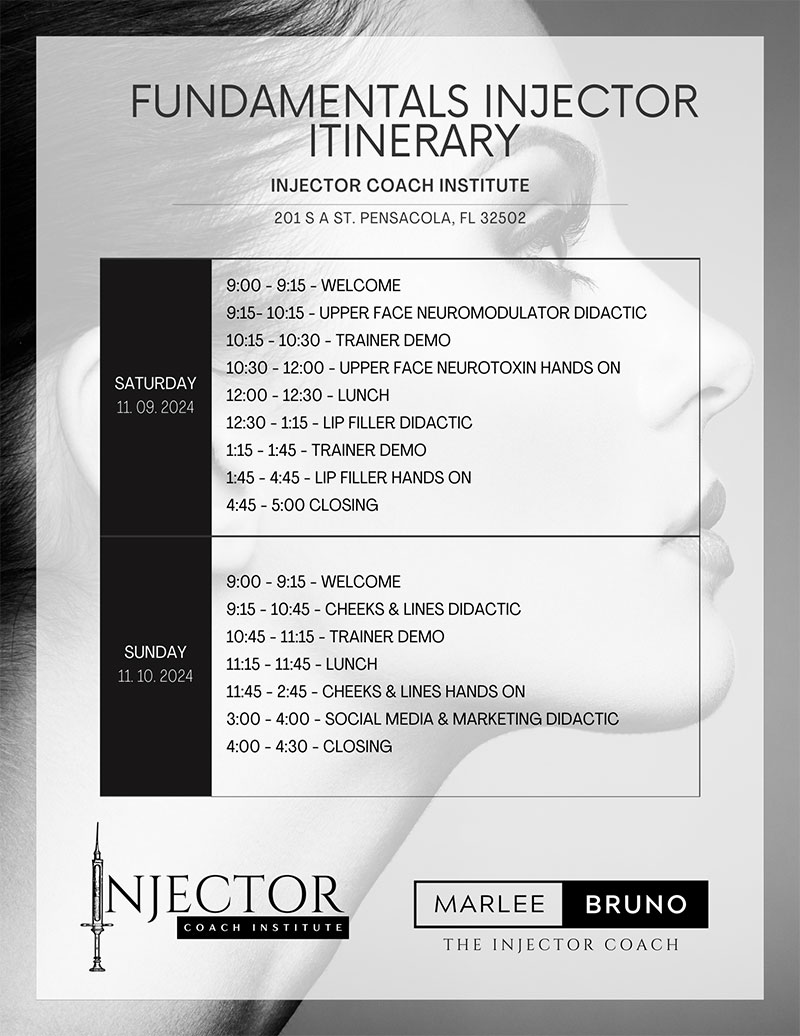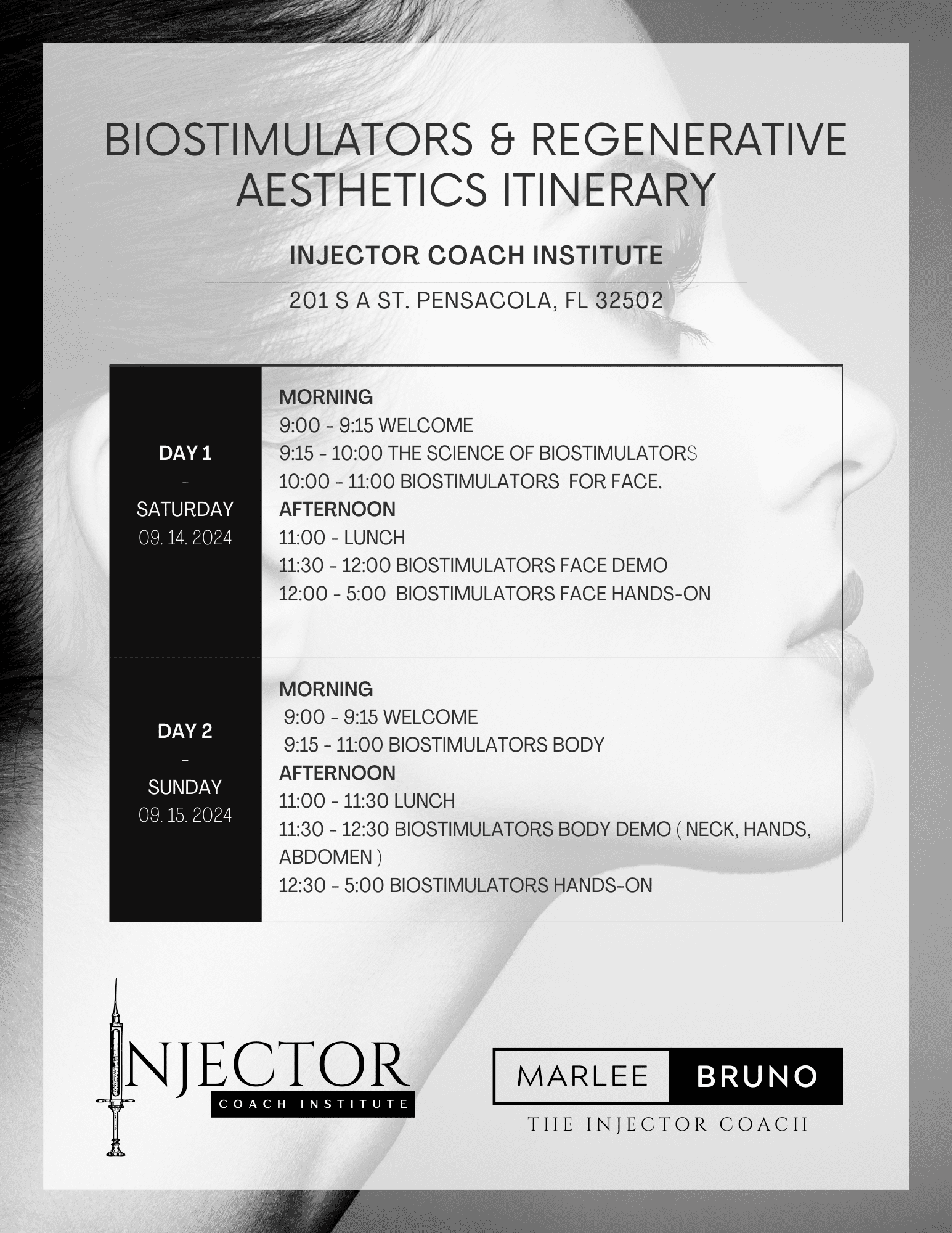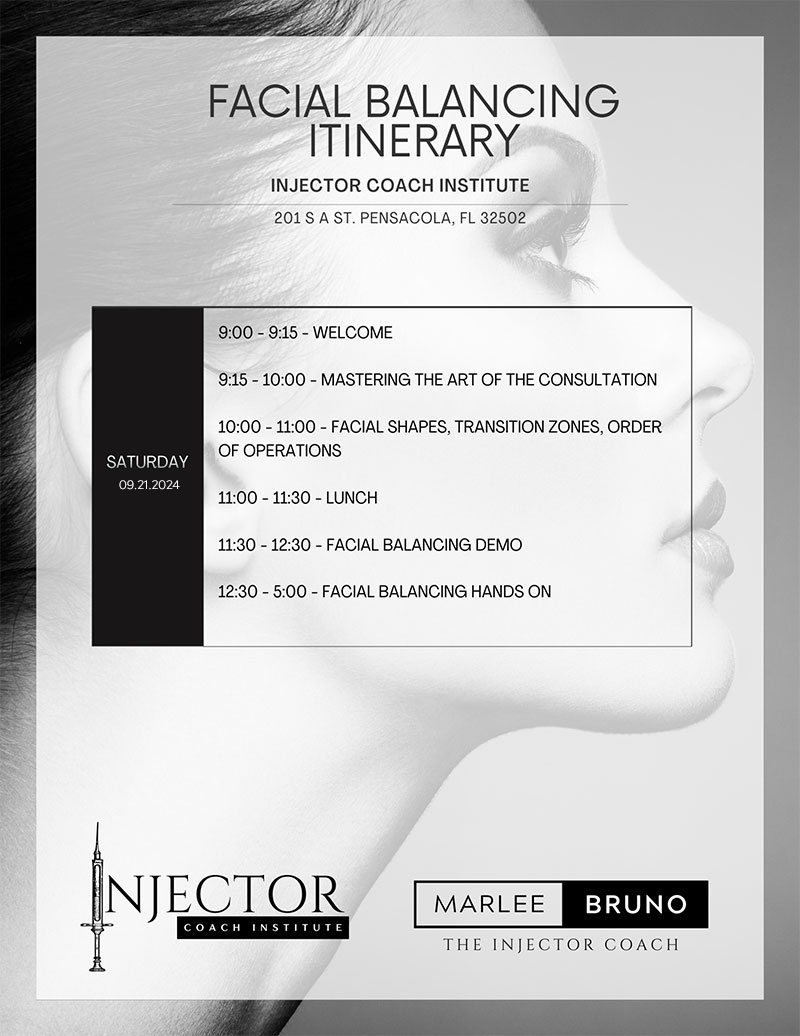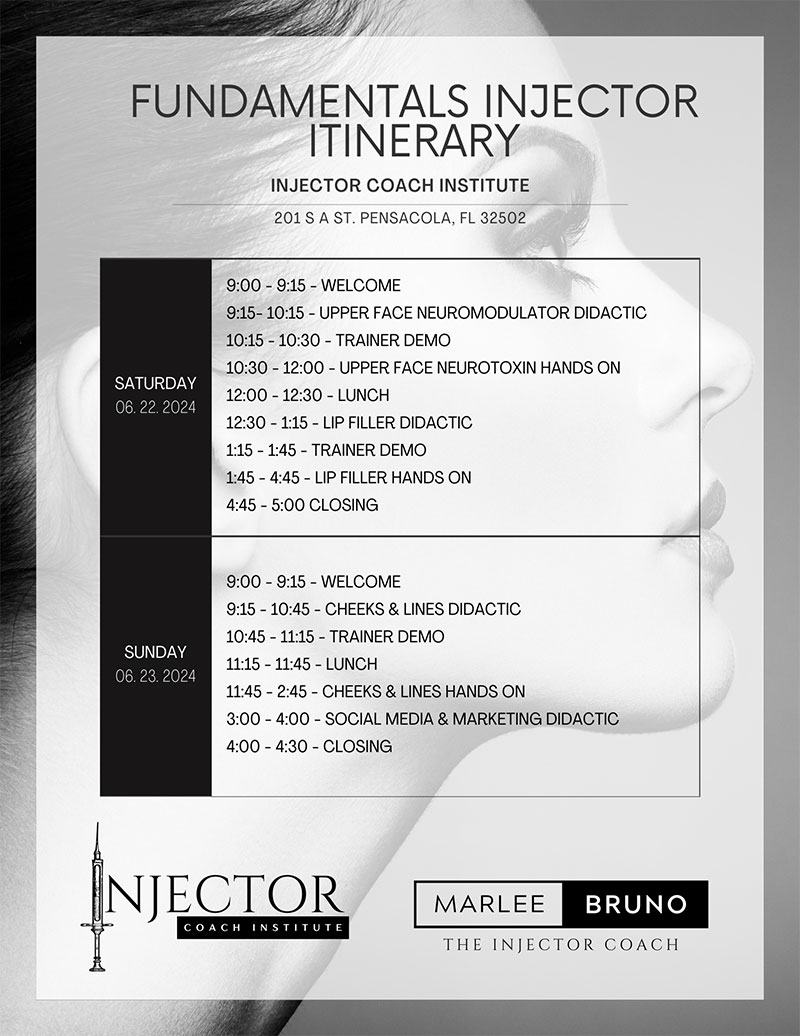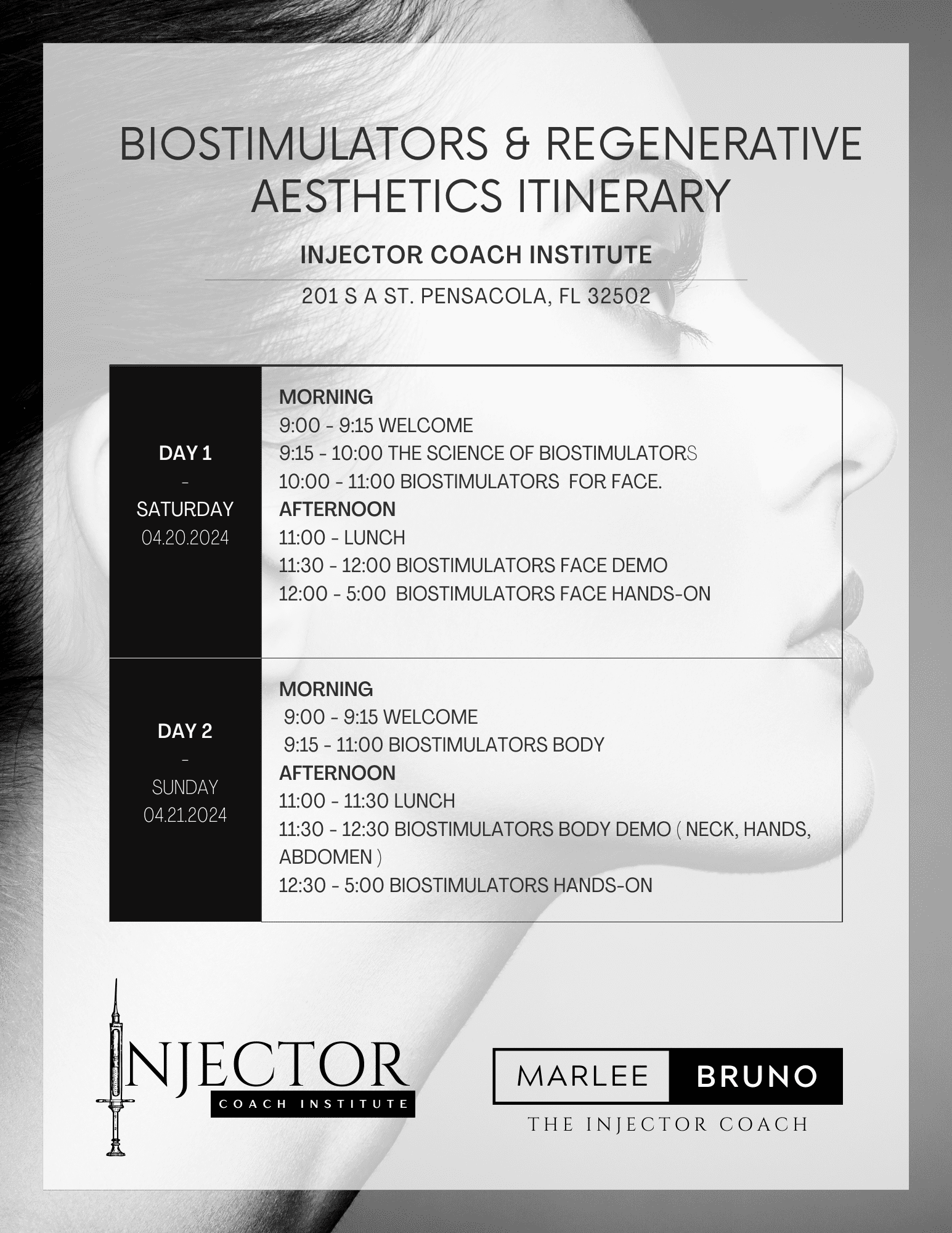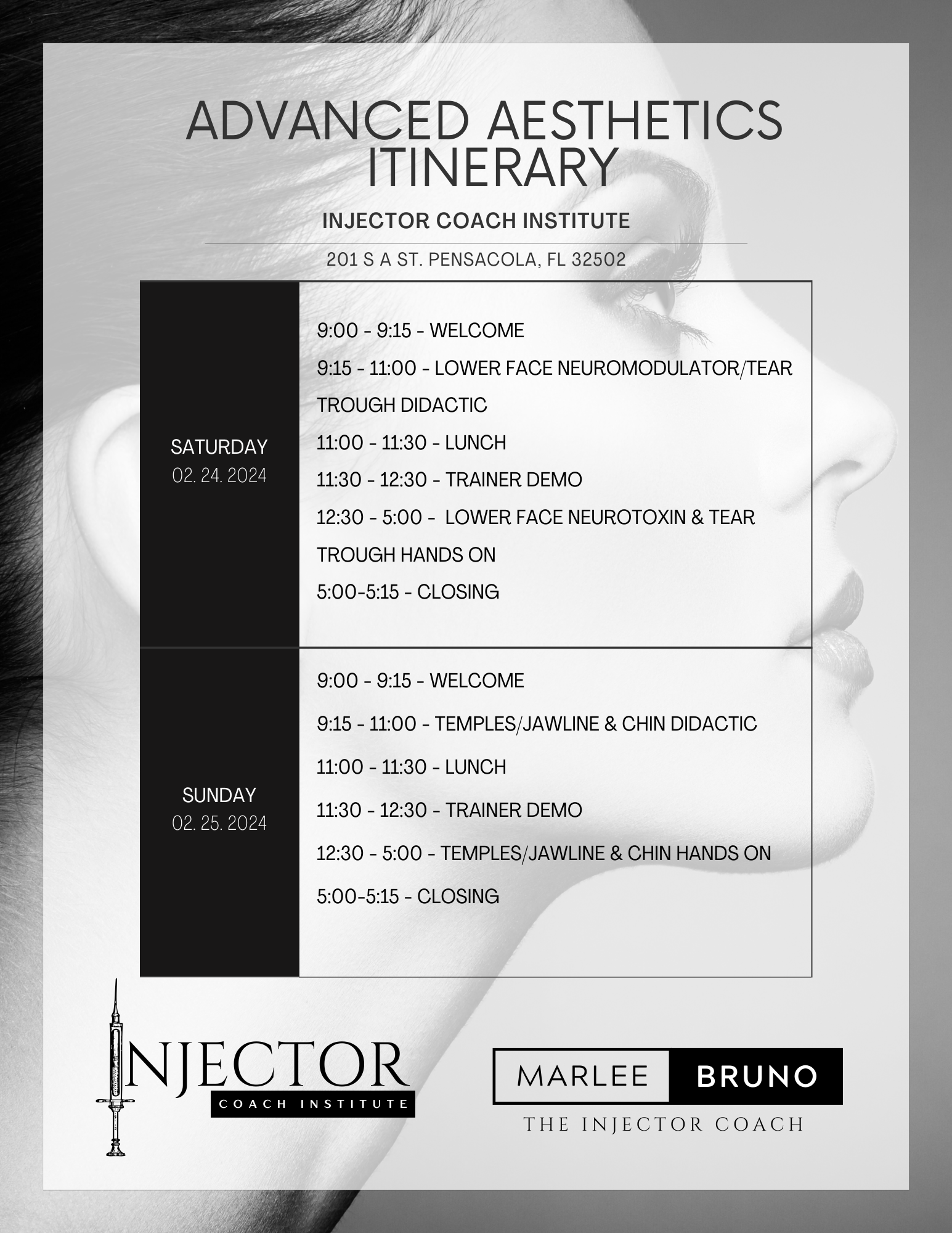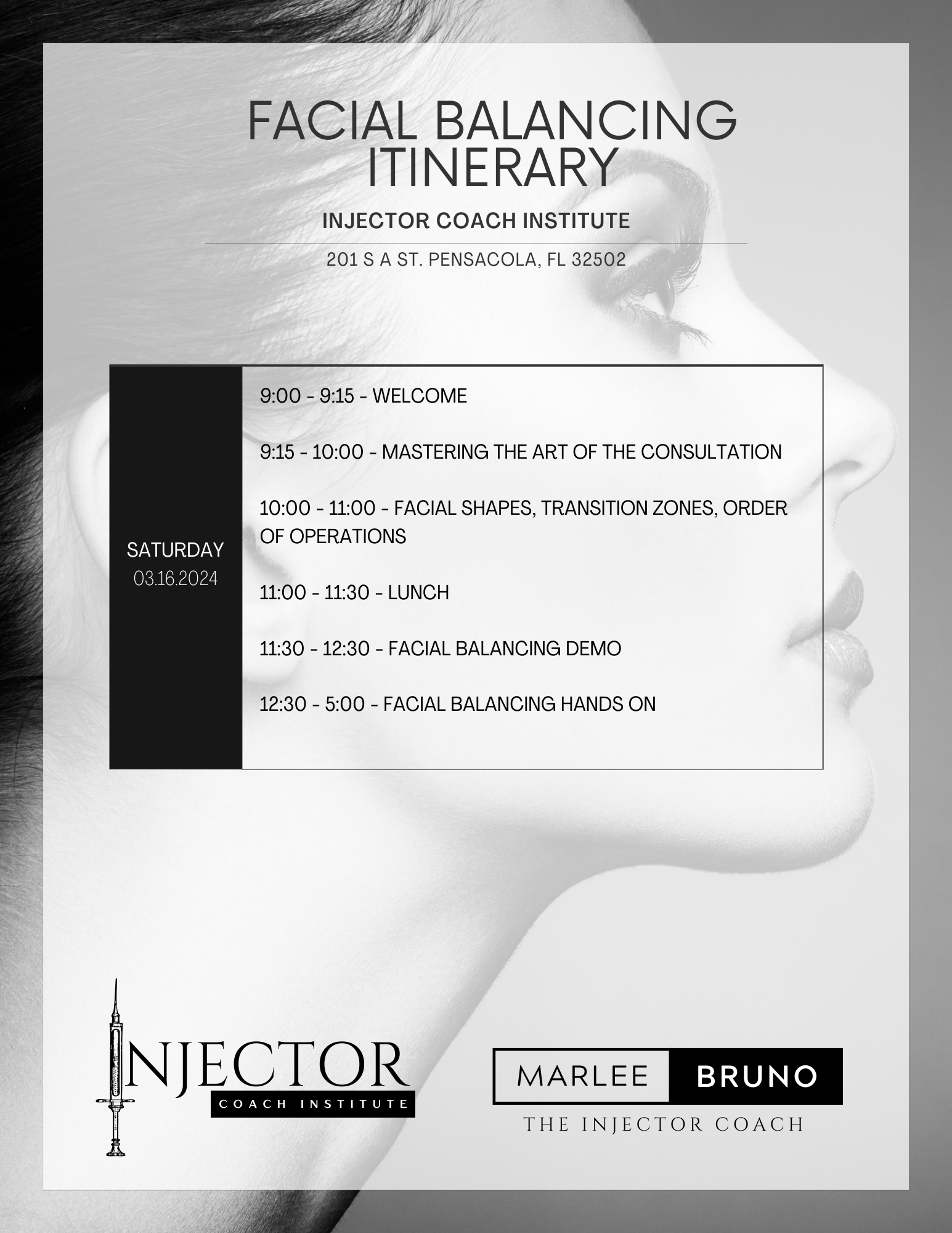| Dermal fillers are a popular aesthetic treatment, but they come with a range of questions from potential clients. Common inquiries include understanding what dermal fillers are and how they work, the different types available and their longevity, which areas of the face they can treat, the level of pain involved, potential side effects, cost, and how to gain further training and expertise. For those looking to start their career as an injector and answer these and other questions, the Injector Coach Institute offers comprehensive training programs and mentorship to support aspiring aesthetic professionals. |
Dermal fillers are a cornerstone of aesthetic medicine, offering a non-surgical solution to facial rejuvenation and enhancement. However, for injectors new to the field, the world of dermal fillers can be both exciting and intimidating. With a vast array of products and techniques, a certain level of knowledge is needed to be able to answer some frequently asked questions. At Injector Coach Institute, we’re committed to supporting injectors at every stage of their journey. To help you navigate the learning curve, we’ve addressed eight common questions that injectors frequently get asked about dermal fillers.
1. What exactly are dermal fillers, and how do they work?
Dermal fillers are specialized gel-like substances that are meticulously injected beneath the skin’s surface to achieve a range of cosmetic enhancements. Their primary function lies in restoring lost volume, smoothing out wrinkles and folds, and enhancing the natural contours of the face. This volume loss often occurs due to the natural aging process, where the skin loses essential components like collagen and elastin, leading to sagging and hollowness. Dermal fillers effectively counteract these effects by plumping up the treated areas, resulting in a rejuvenated and more youthful appearance.
The most prevalent type of dermal filler is composed of hyaluronic acid (HA), a naturally occurring substance found within the body that possesses the remarkable ability to attract and retain water molecules. This unique property of HA fillers makes them ideal for adding volume and hydration to the skin. However, the world of dermal fillers extends beyond HA, encompassing a number of other options.
Each of the filler types discussed below boasts distinct characteristics, longevity, and suitability for specific treatment areas, allowing for tailored solutions to address individual patient needs and desired outcomes. The selection of the most appropriate filler necessitates a careful evaluation of the patient’s unique facial anatomy, aesthetic goals, and medical history, ensuring a personalized and effective treatment plan.
2. What are the most popular types of dermal fillers?
- Hyaluronic Acid (HA) Fillers: These are the most widely used dermal fillers due to their versatility, safety profile, and reversibility with hyaluronidase. They are ideal for addressing a wide range of concerns, from fine lines and wrinkles to lip augmentation and cheek enhancement.
- Calcium Hydroxylapatite (CaHA) Fillers: These fillers stimulate collagen production and provide long-lasting results. They are often used for deeper wrinkles and folds, as well as for facial contouring and volume.
- Poly-L-lactic Acid (PLLA) Fillers: These fillers also stimulate collagen production, gradually restoring volume and improving skin texture over time. They are commonly used for overall facial rejuvenation and are particularly effective for treating nasolabial folds and marionette lines.
- Polymethylmethacrylate (PMMA) Fillers: These fillers are semi-permanent and are typically used for deeper wrinkles and folds. They are less commonly used than other types of fillers due to their permanence and potential for complications.
3. How long do dermal fillers last?
The longevity of dermal fillers varies depending on several factors, including the type of filler used, the treatment area, and the individual patient’s metabolism and lifestyle. Generally, HA fillers last between 6 and 12 months, while CaHA fillers can last up to 18 months. PLLA fillers can last up to 2 years, and PMMA fillers are considered semi-permanent. It’s important to discuss the expected duration of results with your patients and to schedule follow-up appointments for touch-ups or maintenance treatments as needed.
4. What are the most common areas treated with dermal fillers?
Dermal fillers can be used to address a wide range of facial concerns, including:
- Lips: Fillers can be used to add volume, define the lip border, and correct asymmetry.
- Cheeks: Fillers can restore volume to the cheeks, lift sagging skin, and create a more youthful appearance.
- Nasolabial Folds: Fillers can smooth out these lines that run from the nose to the corners of the mouth.
- Marionette Lines: Fillers can soften these lines that extend from the corners of the mouth down to the chin.
- Temples: Fillers can restore volume to the temples, which can appear hollow with age.
- Jawline and Chin: Fillers can enhance the definition of the jawline and chin, creating a more sculpted appearance.
5. Are dermal filler injections painful?
Most patients tolerate dermal filler injections well, with minimal discomfort. Topical numbing cream is typically applied to the treatment area beforehand, and many fillers also contain lidocaine, a local anesthetic. Some patients may experience mild swelling, bruising, or redness after the injections, but these side effects usually subside within a few days.
6. What are the possible side effects of dermal fillers?
While generally safe, dermal fillers can have potential side effects. Common, temporary side effects include:
- Bruising
- Swelling
- Redness
- Tenderness
- Rare but more serious side effects can occur, such as:
- Infection
- Allergic reaction
It’s crucial for injectors to have a thorough understanding of these potential complications and to be prepared to manage them promptly and effectively.
7. How much do dermal fillers cost?
The cost of dermal filler treatment varies widely depending on factors like the type and amount of filler used, the injector’s experience and location, and the specific treatment area. It’s important to be transparent with patients about the cost of treatment and to offer flexible payment options.
8. How can I learn more about dermal fillers and injection techniques?
Continuous learning is essential for any injector. At Injector Coach Institute, we offer comprehensive training programs that cover all aspects of dermal filler treatments, from product selection and injection techniques to patient consultation and aftercare. Our courses are taught by experienced injectors who are passionate about sharing their knowledge and expertise.
Enhance Your Injector Skills with Injector Coach Institute
Whether you’re just starting out in aesthetics or looking to expand your skillset, Injector Coach Institute can help you achieve your goals. We offer a variety of training programs and courses to meet the needs of injectors at all levels. Contact us today to learn more about our programs and how we can help you become a successful and confident injector.
FAQs About Injector Coach Institute
- Who can benefit from Injector Coach Institute’s training programs?
Our programs cater to both aspiring and experienced injectors seeking to enhance their skills and knowledge in aesthetic medicine.
- Do you offer hands-on training with dermal fillers?
Yes, our courses include hands-on training with dermal fillers under expert guidance, allowing you to gain practical experience and refine your injection techniques.
- How can I stay updated on the latest advancements in dermal filler technology?
We offer continuing education courses that delve into the latest trends and innovations in dermal filler treatments.
- What sets Injector Coach Institute apart from other training providers?
Our commitment to excellence, experienced faculty, and focus on both technical skills and business acumen distinguish us as a leader in aesthetic education.
- How can I enroll in a training program at Injector Coach Institute?
Visit our website or contact us directly to explore our course offerings and enrollment process.

